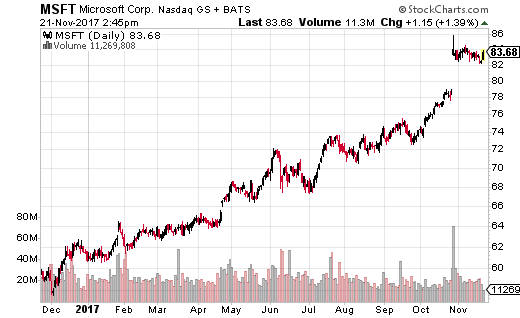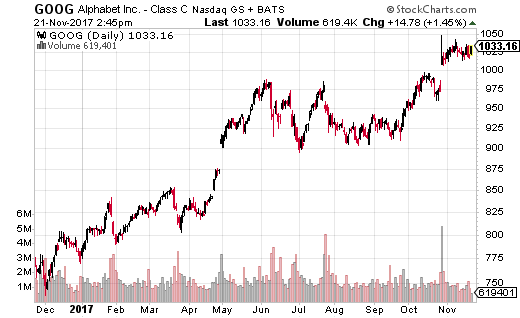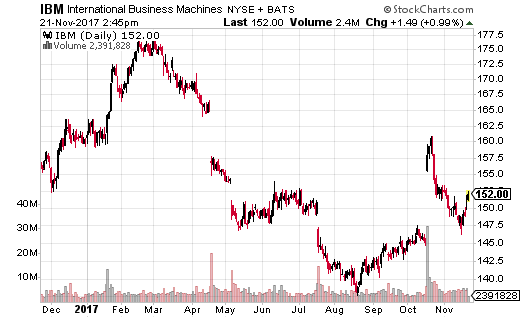Nothing has changed the world more than technology, or to be more specific, the ability to compute. Computers today are helping you in nearly every facet of your personal and business lives. And everyone else too – a large portion of the world’s population now carries a computer in their pockets (smartphones).
All of this has been possible because of the capability to manufacture billions of silicon computer chips every year. Each one of these of these chips is composed of billions of transistors, the basic building blocks of a computer. Today, these transistors are mere dozens of atoms across.
Technological progress has moved steadily forward because of our ability to shrink the size of transistors regularly. That trend is known as Moore’s Law – which at its core says, that every two years, the number of transistors we can cram into a computer chip will double, and it has for decades now.
But guess what? Scientists agree that Moore’s Law is now kaput. It is believed the number of transistors we can cram into a computer chip is slowing and will likely reach its limit at about seven nanometers circa 2020. That view was backed earlier this year by the CEO of Nvidia (Nasdaq: NVDA), Jensen Huang.
Quantum Computers
So what happens then? What’s next?
I found the answer to those questions in the course of my research for the Singularity project. It is a technology so advanced that even Microsoft founder Bill Gates says he doesn’t understand it. And he’s a pretty bright guy.
The technology in question is the coming next age in computing… quantum computers.
The physics behind this is extremely complex, thus stumping Bill Gates even with his knowledge of physics and math. My physics background helps, but I’m no expert on quantum mechanics… so here is the simplest explanation for you I can come up with…
Current conventional computers represent each ‘bit’ of information – the logical zero or one – in the on/off state of a transistor. However, by exercising control over sub-atomic particles known as Majorana fermions, quantum computers will instead work with “qubits”. Unlike a standard bit, a qubit can adopt a uniquely quantum superposition of the two logical states. However, quantum states exist for only a short period of time (a process called coherence). In other words, quibits revert extremely quickly back to a classical computing stage – zeros and ones.
One interesting aspect is that, because of the basic properties of quantum mechanics, a quantum computer will be more prone to errors than a conventional supercomputer. In a Financial Times article, Jeremy O’Brien of the University of Bristol’s Center for Quantum Photonics estimated that to create a quantum computer with 100 ‘logical qubits’, a system with about a million actual quibits would be needed.
Once quantum computers reach the 50 quibits level, they will be superior to every existing conventional computer in existence. And when that happens, quantum computers will be exponentially faster than current computers. And even more importantly, quantum computers will able to solve problems beyond the capabilities of our current machines. Tasks such as designing complex molecules – new drugs or advanced materials – will then be within reach.
The Battle for Quantum Computing Hardware Supremacy
In his recently published book, Microsoft CEO Satya Nadella called the battle over quantum computing an “arms race” as important as AI (artificial intelligence) that has “gone largely unnoticed”. Although not by Microsoft – it began development in the field more than a decade ago.
However, the technology behind quantum computing is now moving out of the science discovery stage and into the engineering phase. As with the very early days of semiconductors, what now is needed is to find ways to scale up a technology that scientists have proven does work.
Ironic that Nadella would that ‘arms race’ term. Because China is racing to beat the U.S. in this new technology and some say it is making great progress toward a 40-qubit machine.
 Luckily, a number of the top U.S. technology companies are working hard on scaling up quantum computing technology. The companies involved in this ‘arms race’ include as I mentioned Microsoft (Nasdaq: MSFT) as well asAlphabet (Nasdaq: GOOG) and IBM (NYSE: IBM).
Luckily, a number of the top U.S. technology companies are working hard on scaling up quantum computing technology. The companies involved in this ‘arms race’ include as I mentioned Microsoft (Nasdaq: MSFT) as well asAlphabet (Nasdaq: GOOG) and IBM (NYSE: IBM). 
Google plans to use a 50-qubit machine later this year as a demonstration of its problem-solving power.
IBM has been offering since last year quantum computing as a cloud service with a 5-qubit computer. Just a week ago, IBM announced it is releasing 20-qubit quantum computers – its first truly commercial offering.

You can see clearly here that the engineering scale-up of quantum computer technology has begun. The problem remains though as to how to keep the errors down. That’s because the more qubits there are, the more complex their interactions (a process appropriately named by scientists as entanglements) are.
IBM has also made progress on the aforementioned time problem. Its machines last year had coherence times of only around 50 nanoseconds. This year, its quantum machines are in the 90 microsecond range. Again, quite a leap forward.
And for Quantum Software and Chips
You may be wondering – so where does Microsoft fit in since it is not really a hardware company like IBM? Think about it – of what use will quantum computers be without software to run on them?
So beginning late this year, its Visual Studio, which is used to writing programs that run on Windows, will include tools to produce software that can run on its quantum machines as well. Through its Azure cloud service, developers will have access to simulations with machines of up to 40 quibits.
With the long time Microsoft has been preparing for the quantum computing age, I would not be surprised to see it dominate the next age of computing software as it did the prior age with Windows.
And despite the high-powered physics behind quantum computers, there will still need to be semiconductor chips to power them. For example, IBM has a quantum computing chip made from metals that become superconducting when cooled to extremely low temperatures. Its chip operates at a temperature a fraction of a degree above absolute zero.
Several types of controlled systems can be used to create qubits – superconducting circuits, trapped ions, and even single particles of light – photons.
Buffett just went all-in on THIS new asset. Will you?
Buffett could see this new asset run 2,524% in 2018. And he's not the only one... Mark Cuban says "it's the most exciting thing I've ever seen." Mark Zuckerberg threw down $19 billion to get a piece... Bill Gates wagered $26 billion trying to control it...
What is it?
It's not gold, crypto or any mainstream investment. But these mega-billionaires have bet the farm it's about to be the most valuable asset on Earth. Wall Street and the financial media have no clue what's about to happen...And if you act fast, you could earn as much as 2,524% before the year is up.
Click here to find out what it is.
Source: Investors Alley
